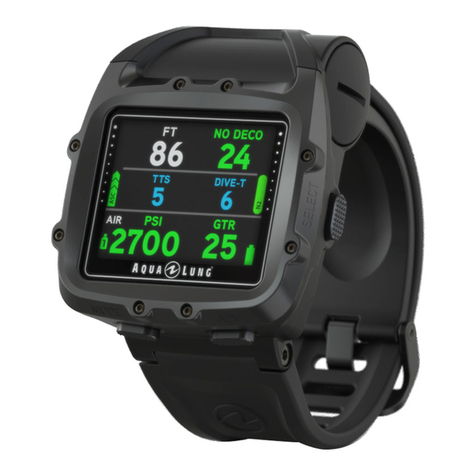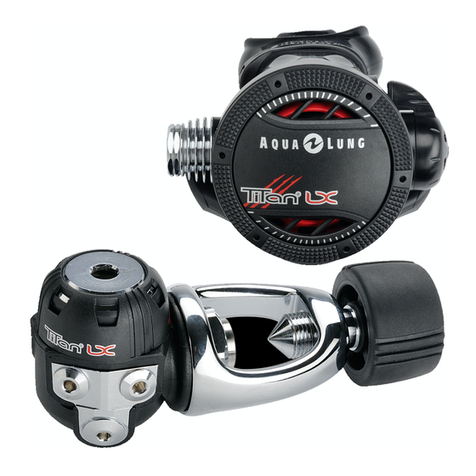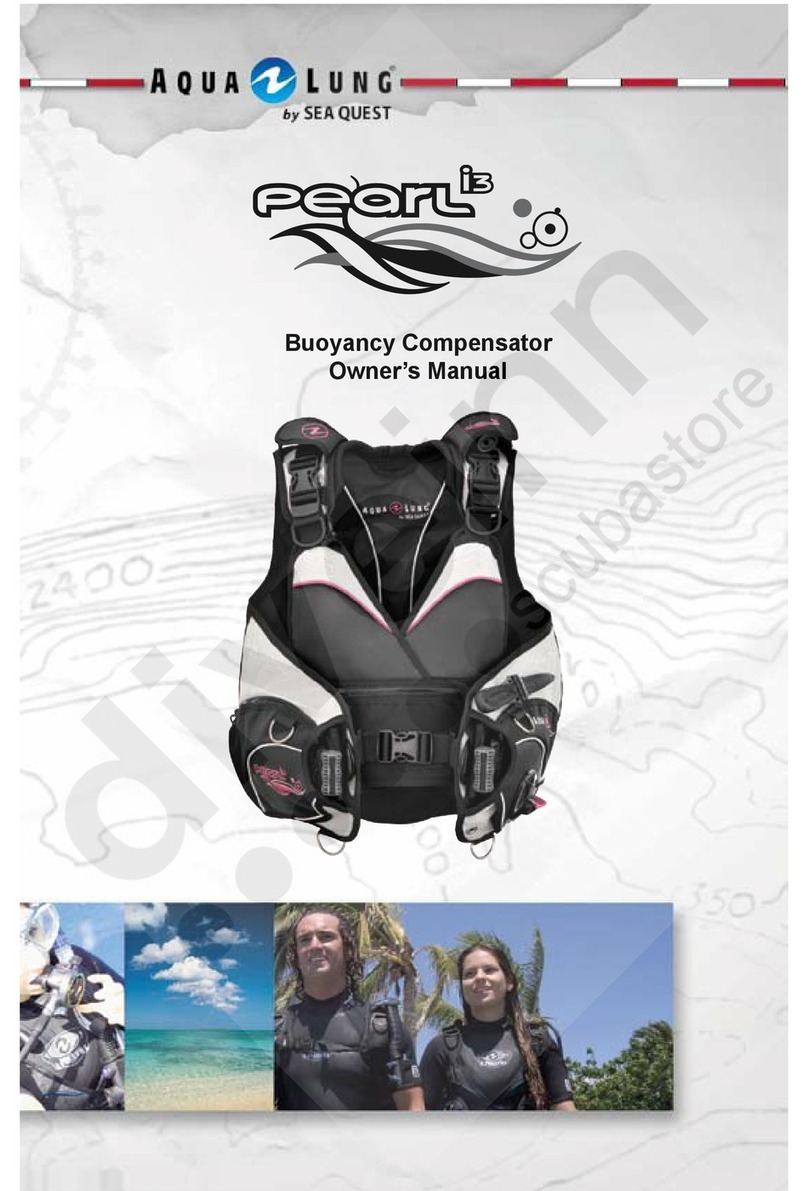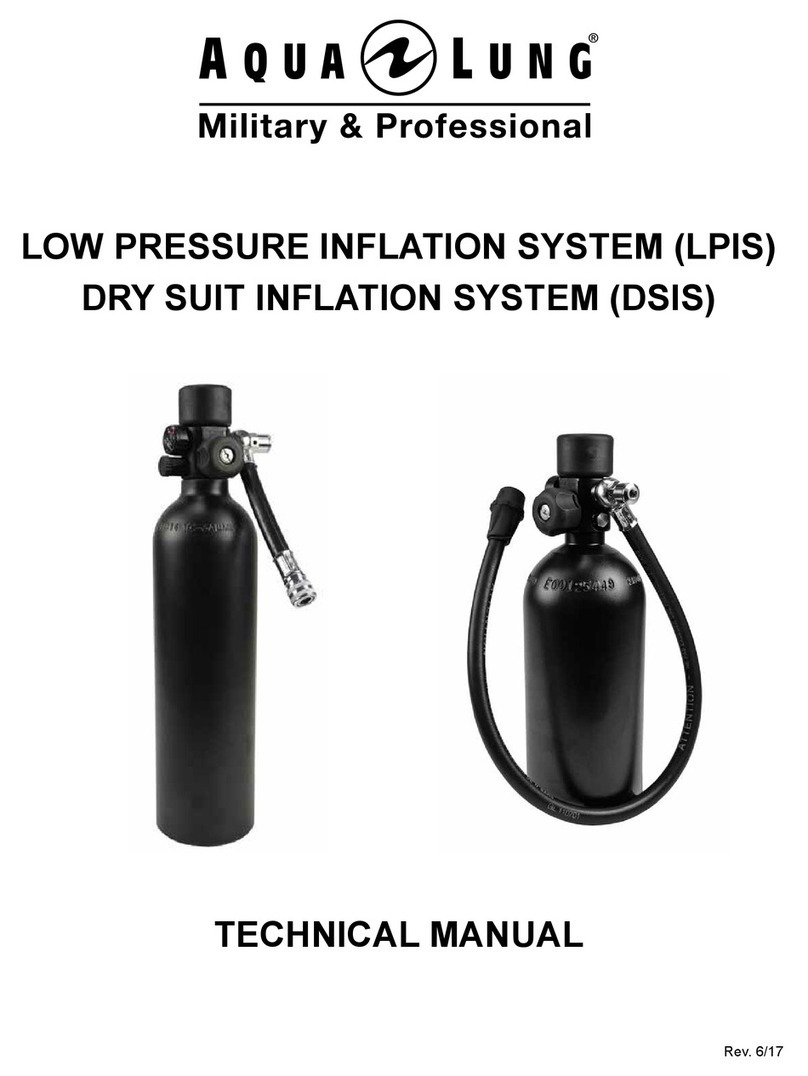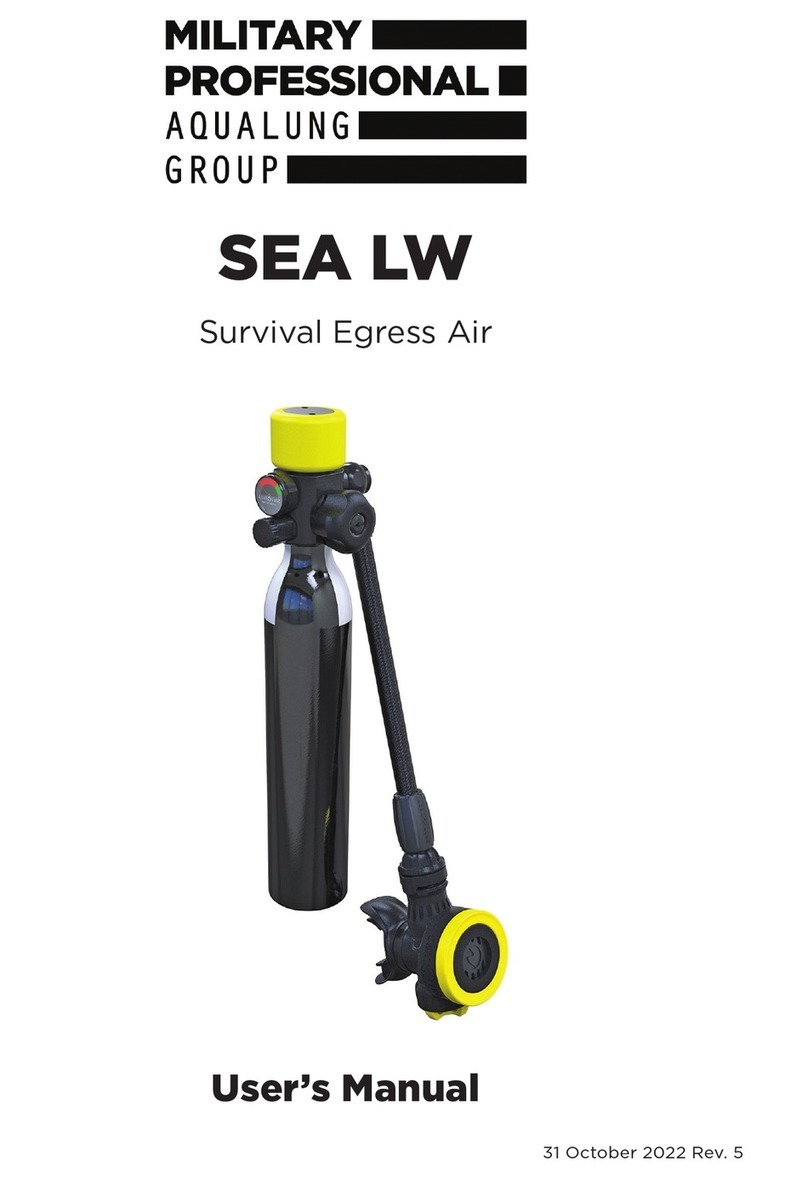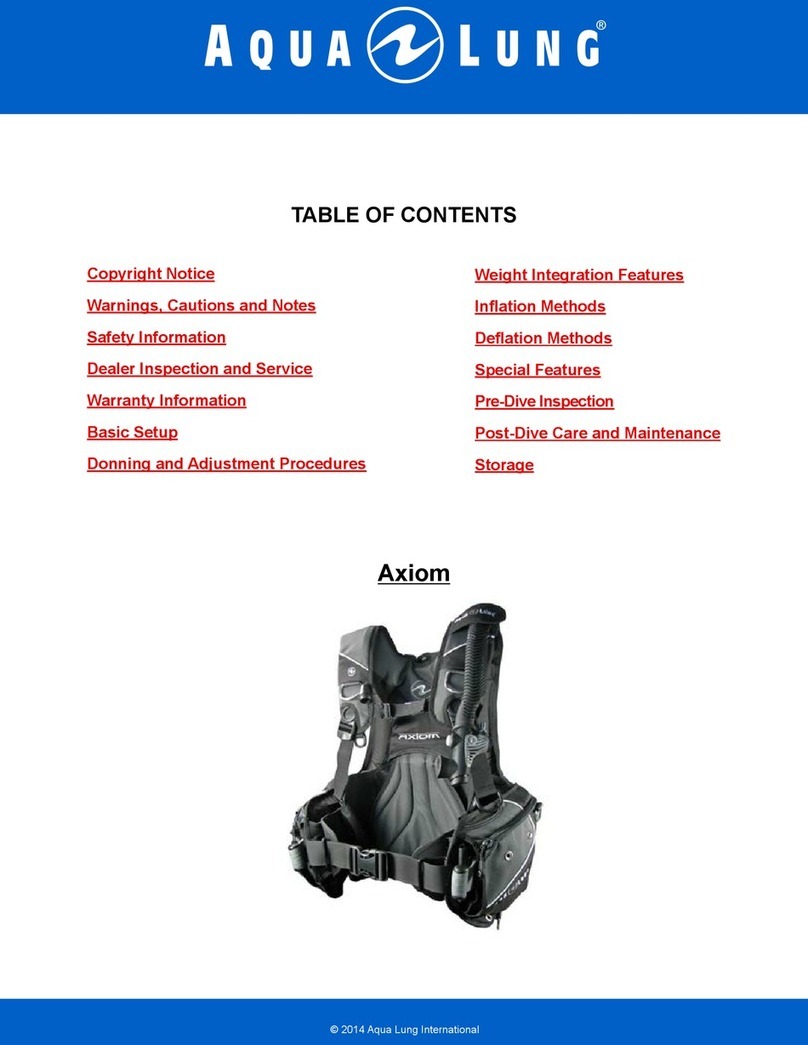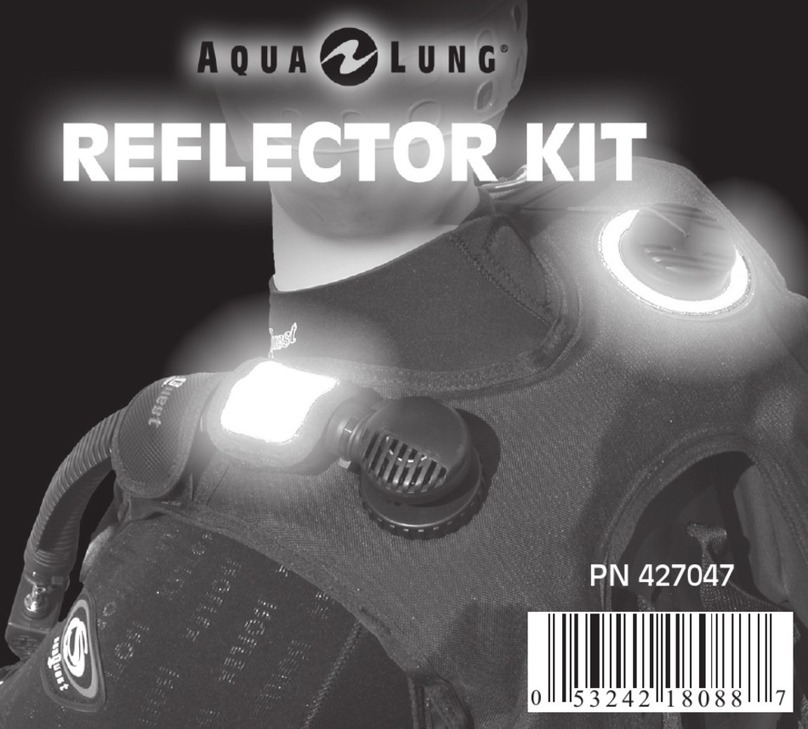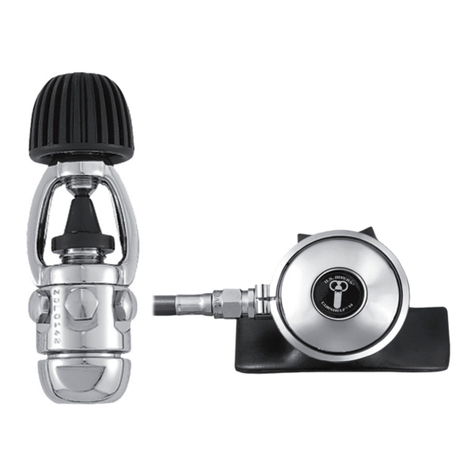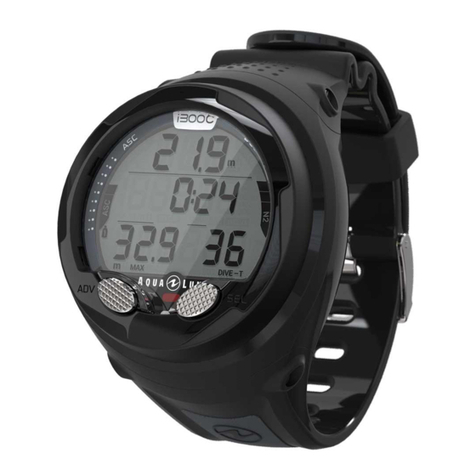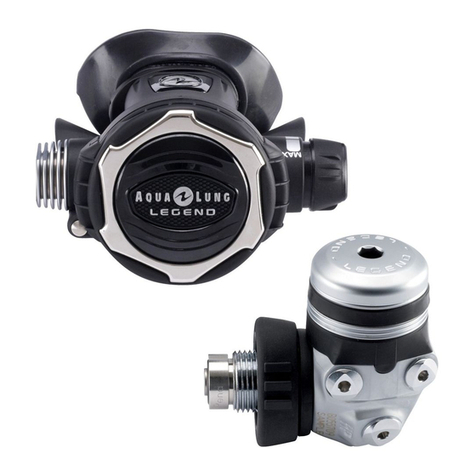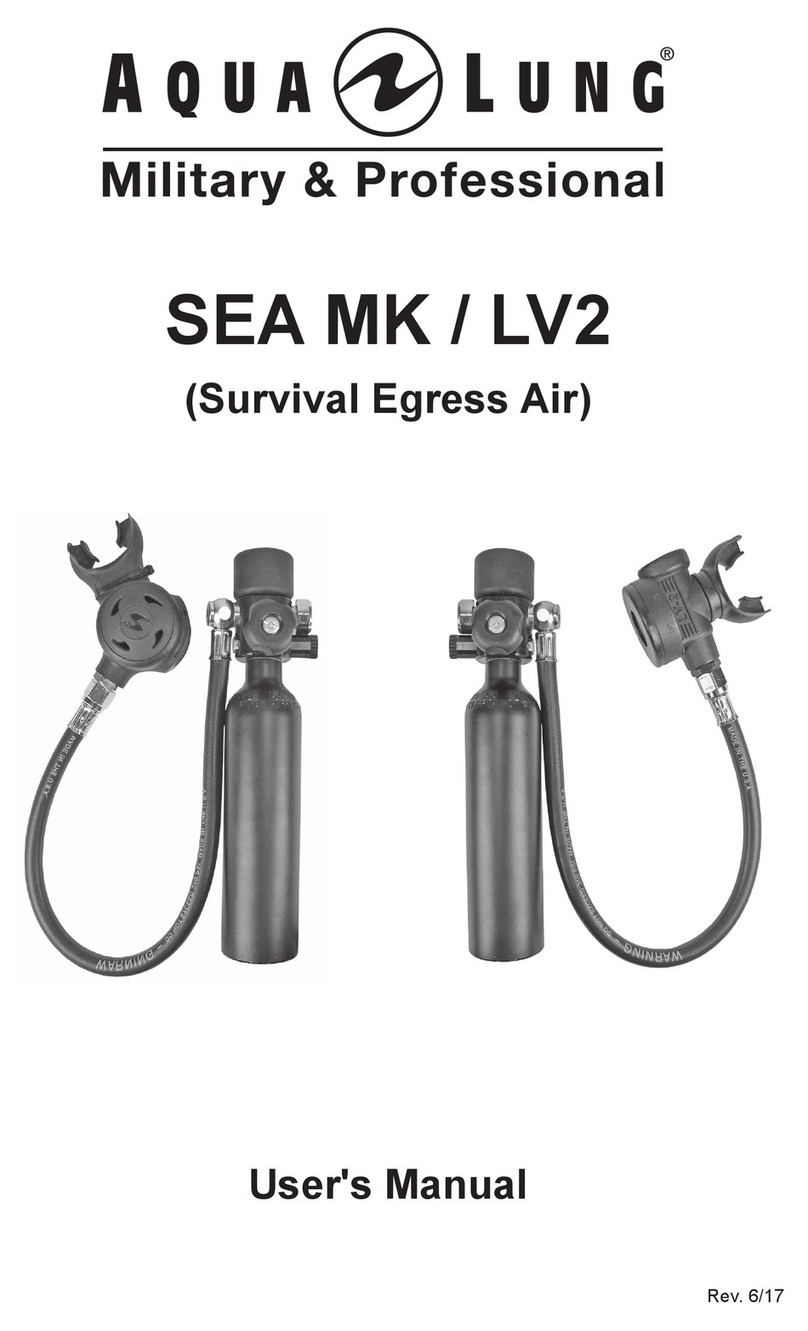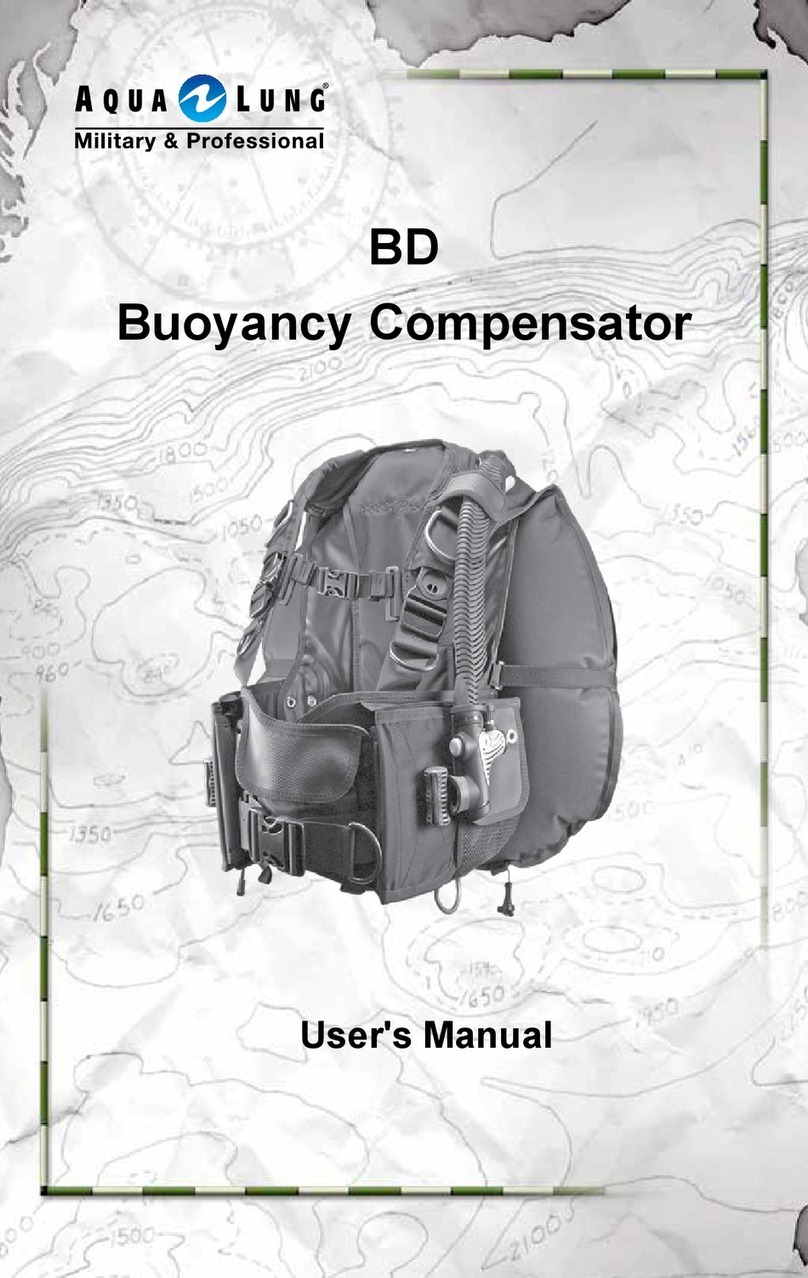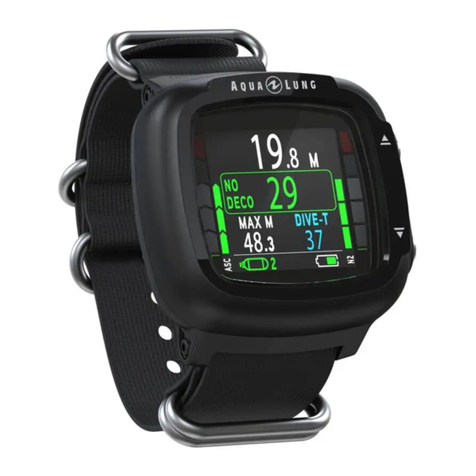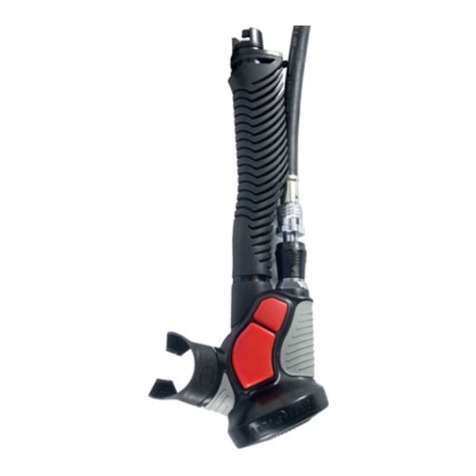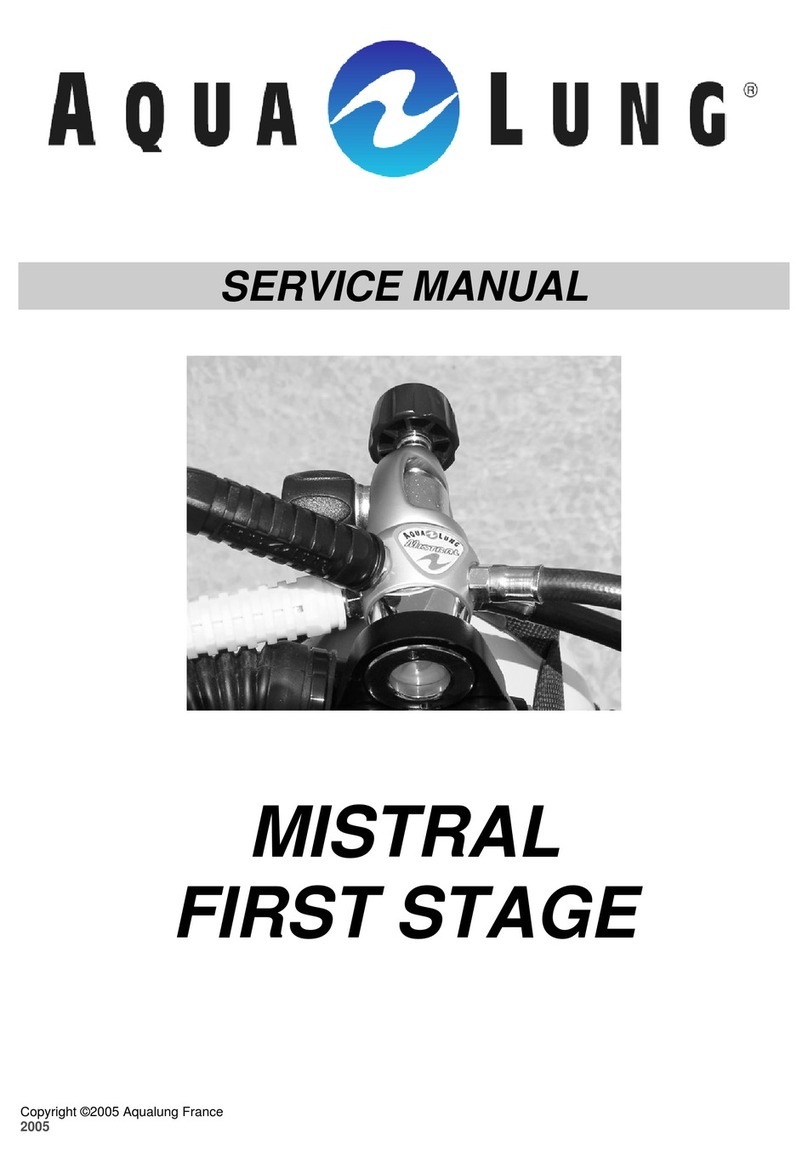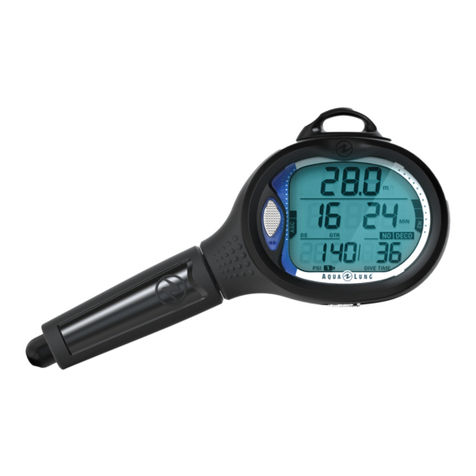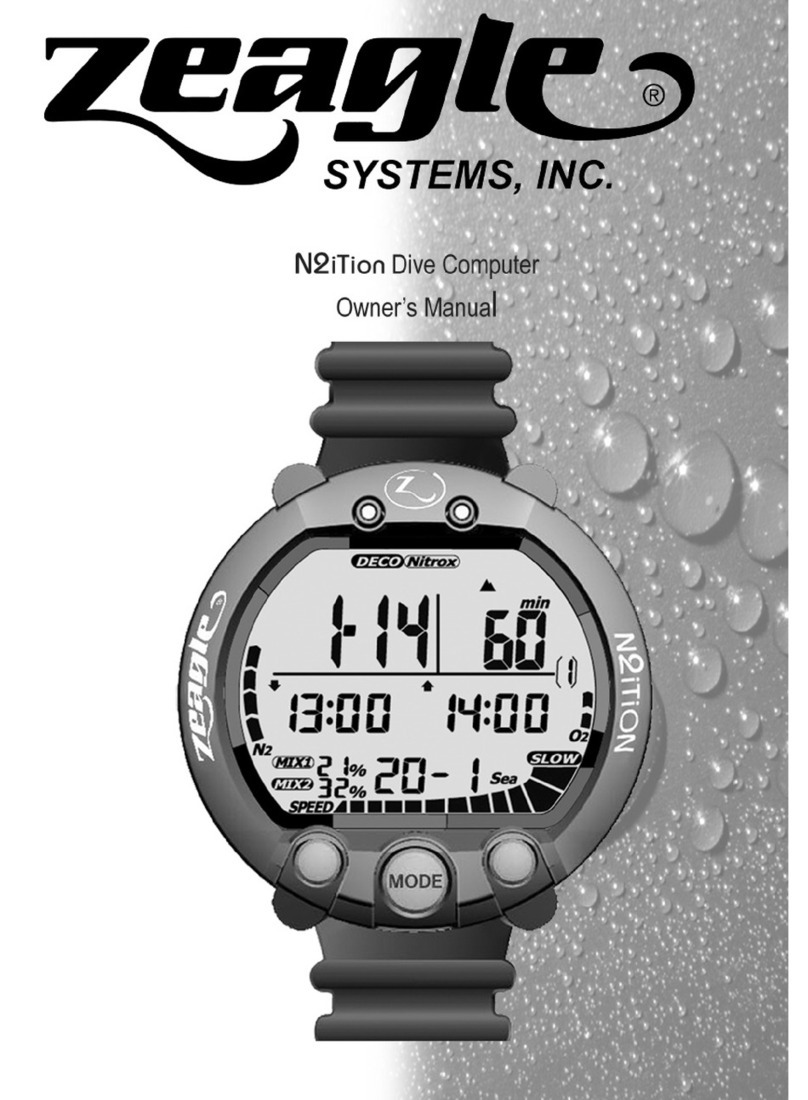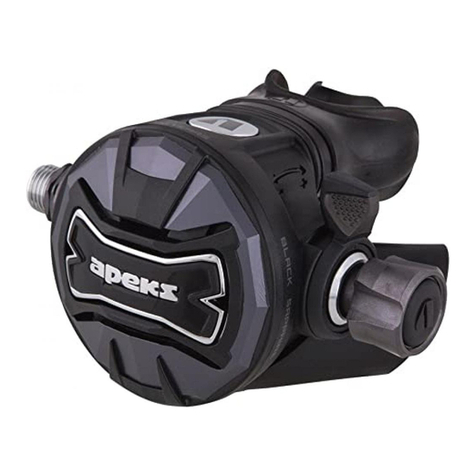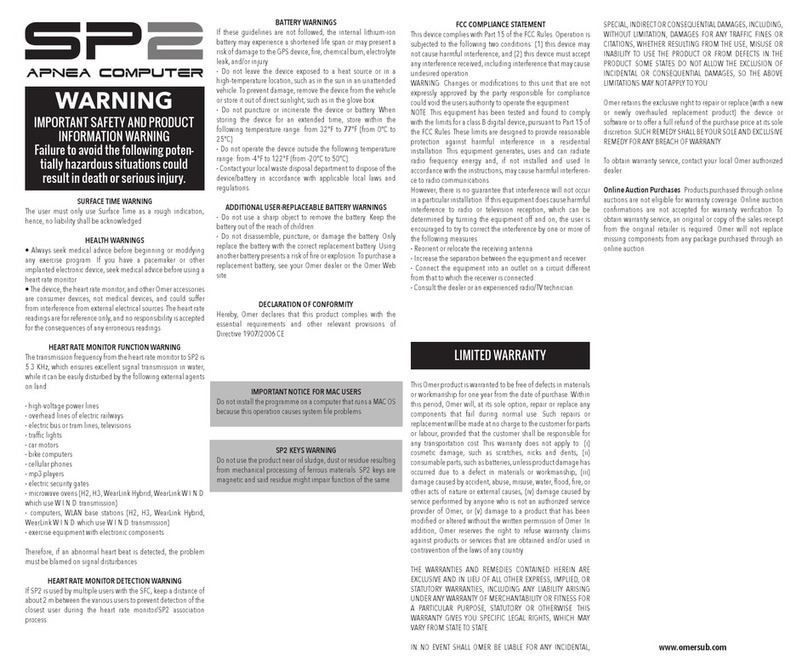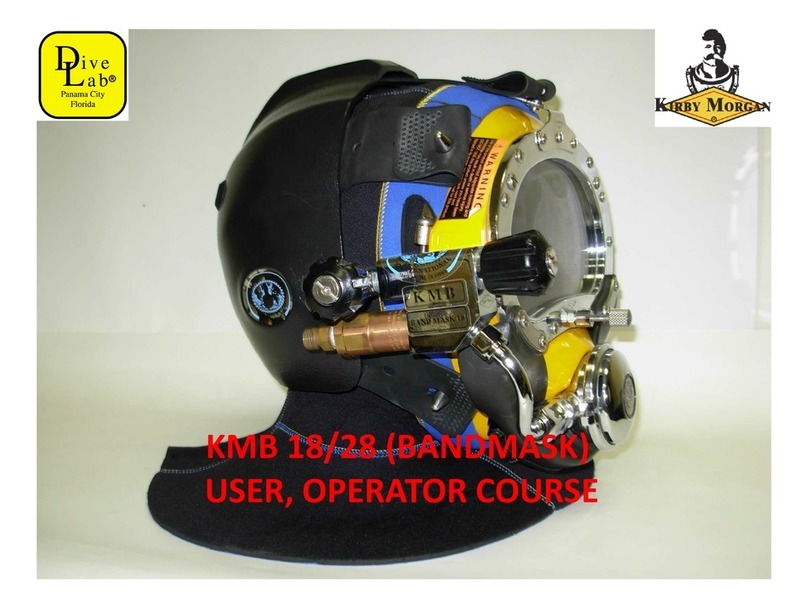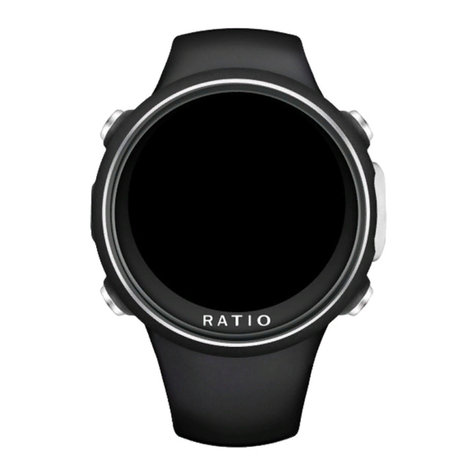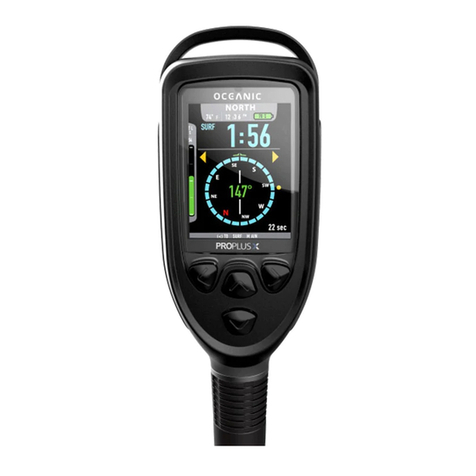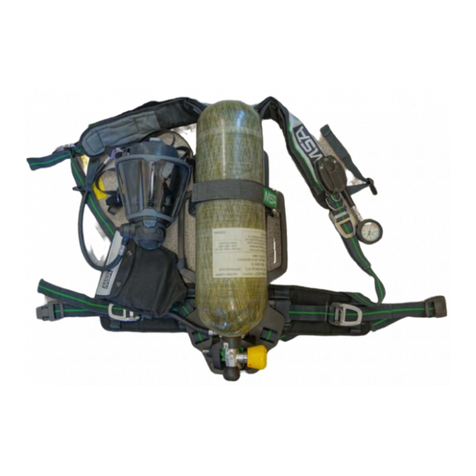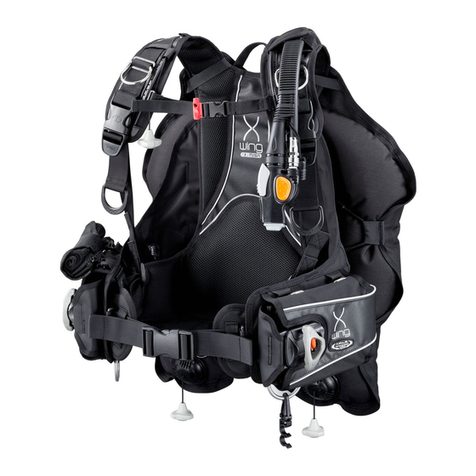2.4 Valve Adjustment Knob (VAK)
2.4.1 LEGEND LX GLACIA Regulator
The VAK, located opposite o the hose connection on certain model second
stages, adjusts the e ort required to start the air low at the beginning o the
inhalation cycle. As it is turned “in” (clockwise), the ope-
ning e ort will increase. This will make the second stage
less sensitive to sudden changes in ambient pressure.
Turning the knob “out” (counter-clockwise) will decrease
the opening e ort to make breathing easier.
This adjustment is particularly use ul at deeper depths,
or in variable conditions that a ect the opening e ort o
the second stage, such as strong currents or while using a diver propulsion
vehicle (DPV). It will also allow compensation or a di erence in the hydrostatic
pressure and the centre o your lungs, such as when you are in a head-down
position. You can use the VAK to tune your regulator to maintain its peak per-
ormance throughout the course o your dive, or you can leave it set in its mid-
range position and dive with as you would any non-adjustable second stage.
2.4.2. Kronos Second Stage Adjustment: „Dual Cam‰.
The Dual Cam patented adjustment system combines both the VAS and the
VAK.
In the “+” position: the VAS is maximum and the VAK is
minimum (turned out). This gives optimum per ormance
(average: 1.2j/l according EN 250).
In the “-“ position: the VAS is minimum and the VAK is
maximum (turned in). This reduces per ormance to the
maximum allowed by EN 250 (average: 2.8j/l). This
o ers a very e ective pre-dive position.
2.4.3 ikron Regulator
The VAK, located opposite o the hose connection on certain model second stages,
adjusts the e ort required to start the air low at the beginning o the inhalation
cycle. As it is turned “in” (clockwise), the opening e ort will increase. This will make
the second stage less sensitive to sudden changes in
ambient pressure. Turning the knob “out” (counter-clock-
wise) will decrease the opening e ort to make breathing
easier. This adjustment is particularly use ul at deeper
depths, or in variable conditions that a ect the opening
e ort o the second stage, such as strong currents or
while using a diver propulsion vehicle (DPV). It will also allow
compensation or a di erence in the hydrostatic pressure and the centre o your
lungs, such as when you are in a head-down position. You can use the VAK to tune
your regulator to maintain its peak per ormance throughout the course o your
dive, or you can leave it set in its mid-range position and dive with as you would any
non-adjustable second stage.
When the VAK is completely unscrewed (counter-clockwise), the regulator will pro-
vide maximum per ormances. When the VAK is completely screwed (clockwise),
breathing resistance is increased.
10 Back to the contents
